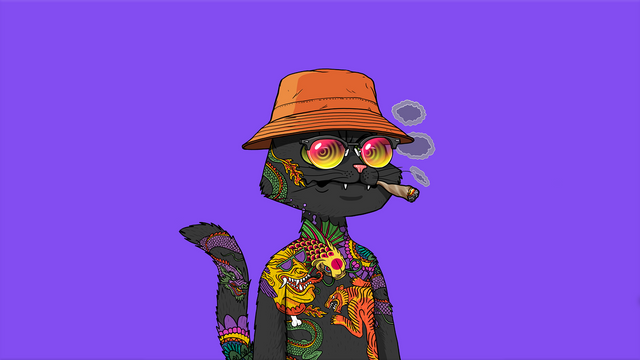Beginner's Guide to Investing in Non-Fungible Tokens
Beginner's Guide to Investing in Non-Fungible Tokens
As you start to learn more about the blockchain, you will likely hear about non-fungible tokens (NFTs) at some point. While they are not nearly as common as other crypto assets like utility tokens and security tokens, NFTs still have some interesting properties that could make them quite useful in certain situations. If you’re thinking about investing in NFTs, here’s what you need to know about them!
What are Non-Fungible Tokens?
A non-fungible token (NFT) is a crypto asset that exists on its own blockchain, each unit with unique information regarding its owner, and each NFT representing something unique and different from every other token on that blockchain. CryptoKitties, for example, are a popular form of NFT that enable users to buy and sell digital kittens. Each CryptoKitty’s details include a picture, name, birthday, breed... and those details can be traded just like any crypto assets.
Generating Value With Crypto-Collectibles: The easiest way to create value in crypto is by making your asset scarce—and there’s no better way to do that than using your crypto assets as collectibles.
Why are they different from traditional tokens?
NFTs are unique digital assets that can be easily transferred, stored and traded digitally, using blockchain technology. An NFT differs from a traditional ERC20 token in that it is not fungible; each item is different from all others due to its own set of characteristics. This means if you have an NFT, you won’t be able to trade it for another one on an exchange. Instead, an NFT must truly represent something else: property rights or shares of ownership for example. Some common examples of non-fungible tokens include CryptoKitties—the most famous real world example—and Decentraland (MANA), which represents land parcels within Decentraland’s virtual world. Both CryptoKitties and MANA represent less physical entities than say gold bullion, but by virtue of their uniqueness they can be traded like crypto currency for ETH or BTC. Unique items also ensure scarcity among peers as there will only ever be one Scooby Doo 1/1 collectible card in existence. Most importantly though, some argue that non-fungible tokens are more valuable because of their rarity and exclusivity—particularly in terms of brand loyalty. Just as Star Wars collectors would rather pay money for a rare figurine than a cheap version, your customers may be willing to buy from you instead of your competitors purely because your offering represents something special and exciting to them.
Where can I buy NFTs?
While there are many options for purchasing and trading crypto, not all of them offer NFTs for sale. The most popular exchanges for buying and selling cryptos tend to be decentralized exchanges such as Waves and EtherDelta, both of which are popular with game developers and users of ERC721 tokens. There’s also opensea.io, IDEX, but it’s important to note that while IDEX is a decentralized exchange, it’s not an ERC721 token exchange – at least, not yet. Then again, there are a number of ICO sites where you can buy NFTs from other users; if you go that route, however, beware of scams. When buying from third parties, research everything before you send your ETH anywhere. For example, don’t just assume someone who offers assets on their site or online forums is trustworthy; be sure to ask for proof of any claims they make (like screenshots or user reviews). Finally, if you plan on participating in online auctions for rare NFTs like CryptoKitties (which have sold for over $100K each), remember that these types of sales happen primarily through private transactions rather than centralized exchanges.
Can NFTs be traded on exchanges?
Exchanges are platforms that allow you to buy and sell tokens for other coins or fiat currency. Although many NFTs can be traded on exchanges, there aren’t any platforms exclusively for trading NFTs. This means that traders need a platform with a large selection of different tokens, such as IDEX, Bancor Network, or ForkDelta. If you want to trade your NFTs on an exchange, it’s best to check first if it allows trading between currencies. Alternatively, most decentralized exchanges also have ERC20 support—this is essentially integration into their backend infrastructure that allows users to trade assets seamlessly across their platform.
What should I look out for when investing in an NFT?
While there are plenty of great NFTs out there, there are also a lot of bad ones. Before investing, you should look for projects that have: Active teams—look for constant progress and communication from your NFT’s team. Transparent token economies—the whitepaper should explain how each token functions within their ecosystem, so always make sure to read it! Prototype/MVP—this doesn’t mean companies don’t require working products (they do), but if they already have one, then their chance of success is higher. Development support—what does your favorite NFT do for developers? Are they adding new functionality? Do they have an SDK? Airdrops/Rewards programs—if an NFT gives rewards based on things like holding tokens or referring friends/contributors, then it might be worth looking into.

